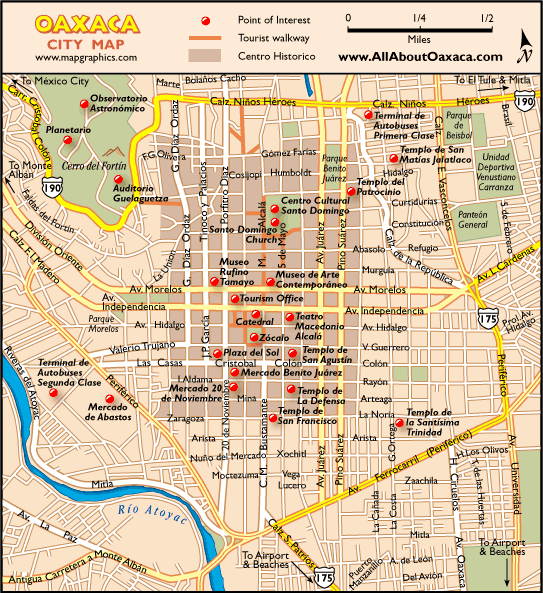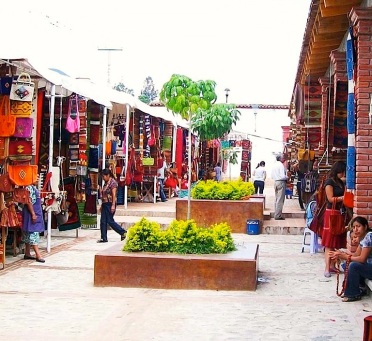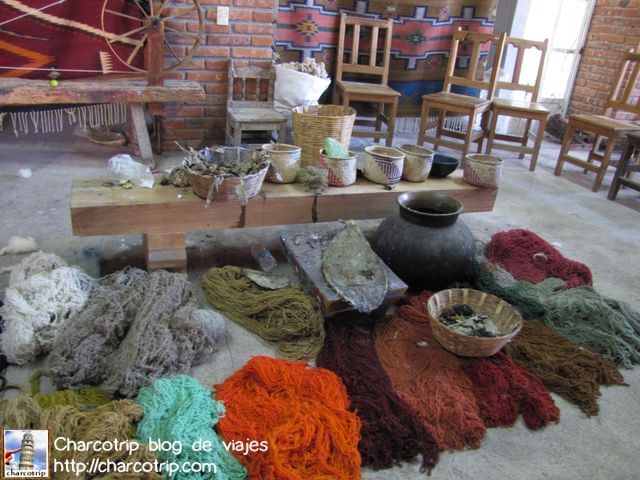
My Criteria:
• Attractive location, lots of green spaces and water attraction/s
• The central historical area can be explored on foot
• Historic sights, outdoor entertainment and museums
• Transportation is convenient and fun
• Lots of coffee shops, pubs and culturally interesting food
• Has a unique and appealing ambiance
Oaxaca City is a colonial city centrally located in the southern state of Oaxaca in Mexico.

The small central historical area including the ‘Zocalo’ (pubic square/plaza) along with Santa Domingo plaza is the for me the heart and soul of what makes it a fascinating locale. My first visit there cast such a colorful spell on me that I longed for more. 
It has a certain ambiance which is what drew me back several times. Eventually I came to know the entire area fairly well. There are many interesting sites to visit in the famous center and others within an hour or so by car.
Here is a link to another blogger who has already done such a great job writing about both Oaxaca State and City I recommend reading this before continuing with mine! https://thegr8wall.wordpress.com/2013/05/16/oaxaca-the-soul-of-mexico/
For the most part Oaxaca City meets my criteria well. It is especially ‘walkable’ since its flat, planned in a grid pattern and there are surprises around every corner. It is only about 5 blocks from the Zocalo to El Museo de Culturas de Oaxaca (The Museum of Cultures of Oaxaca) and the gardens behind. (All delightful.)
http://www.visitmexico.com/en/santo-domingo-cultural-center-in-oaxaca-mexico
There are many museums of all sorts: http://www.planeta.com/ecotravel/mexico/oaxaca/oaxmus.html
It has a warm and dry climate that is pleasant, however there are sometimes water shortages. So the few parks and private gardens are the only green places and fountains are the only water attractions.
My special experiences visiting there include language classes, El Zocalo, giant radish carvings at Navidad, Monte Alban, the Galagetza, El Arbol de Tule, tapetas and albrejas, and rock waterfalls. I will mention a little about each of these and include some links with recent information.
Language Classes
Oaxaca City is also well known as a center for ‘gringos’ and other foreigners coming to the Spanish language schools. This is how I first heard of it. 12 years ago I was working as an elementary teacher at a private school in Mexico City and at a colleague’s recommendation I took a week-long class during Spring break at the ‘Amigos del Sol’ (Friends of the Sun) Language school. I stayed in an economical hostel run by locals which included a private room and shared meals where we only spoke in Spanish. It was only a few blocks from the school. The school was small, simple, relaxed, fun and somehow enchanting. Here is a link to give you an idea of what it is like, but the school has moved since then. (And I can’t find my old photos! 😦 http://www.oaxacanews.com/amigosdelsol.htm But this link will lead you to some wonderful photos taken by other students. https://www.flickr.com/photos/amigosdelsol/albums/72157621971910166
El Zocalo

Oaxaca Zocalo at Night 1
The classes were only in the morning which left the afternoon and evenings free to explore. The most wonderfully magical experience I recall was visiting the Zocalo in the evening. The area was a hive of relaxing activity with a  lovely large fountain in the center. Children were dancing to marimba tunes or pan pipes and chasing balloons skyward. Larger than life figurines on stilts appeared to be dancing with them. It was a gentle party.
lovely large fountain in the center. Children were dancing to marimba tunes or pan pipes and chasing balloons skyward. Larger than life figurines on stilts appeared to be dancing with them. It was a gentle party.
As that week was ‘Semana Santa’ there were many special celebrations going on which were new to me. Here is a link to another blogger with a video (a bit new age-ish) https://raintreetraveler.wordpress.com/2014/03/20/easter-oaxaca-world/?blogsub=confirmed#blog_subscription-3 Some of the traditions, from Spain, were a little spooky for me (the silent, barefoot, cross-toting parade and the costumes), but still fascinating. The atmosphere was peacefully celebratory.

Day and evening in the Zocalo there were many lovely, handcrafted items for sale at good prices including tapetas and novel folk art ‘alebrijes’ – my favorites. https://www.nps.gov/cham/learn/historyculture/oaxacan-art.htm
Restaurants, with outdoor seating, surrounded the Zocalo. The local cuisine included mole as one of the specialities. Very tasty and exciting sauces. http://www.epicurious.com/archive/blogs/editor/2014/09/the-7-definitive-types-oaxacan-mole.html 
El Noche de Rabenos – The Night of the Radishes
Enamored with Oaxaca City I visited again to celebrate Navidad (Christmas) with my mother who flew down from California. One of the unique discoveries we made was the competition of carving giant radishes into amazing structures and artistic shapes.

http://www.goseewrite.com/2011/06/oaxaca-mexico-night-of-radishes/#
The Guelaguetza
We also enjoyed an unforgettable evening’s entertainment watching dances from all of the 16 regions of Oaxaca.
https://www.youtube.com/watch?v=mxAP_AHw2PM https://www.youtube.com/watch?v=2k25Th6k0ks
 Normally this festival is held in July, but for the tourists who flock there in Navidad they hold special shows at some of the hotels. We attended one at the lovely convent converted into the now Camino Real Hotel.
Normally this festival is held in July, but for the tourists who flock there in Navidad they hold special shows at some of the hotels. We attended one at the lovely convent converted into the now Camino Real Hotel.
Monte Alban
There are many tours available which could be booked at the hotels. Although we had a rental car we decided to take a tour bus to the fascinating ancient city of Monte Alban and thereby also learning more about it with a guide who spoke passable English. Monte Alban and the colonial historic center of Oaxaca are listed as a two-part UNESCO World Heritage Site.
 “Monte Alban is the most important archaeological site of the Valley of Oaxaca. Inhabited over a period of 1,500 years by a succession of peoples – Olmecs, Zapotecs and Mixtecs – the terraces, dams, canals, pyramids and artificial mounds of Monte Albán were literally carved out of the mountain and are the symbols of a sacred topography. The grand Zapotec capital flourished for thirteen centuries, from the year 500 B.C to 850 A.D. when, for reasons that have not been established, its eventual abandonment began. The archaeological site is known for its unique dimensions which exhibit the basic chronology and artistic style of the region and for the remains of magnificent temples, ball court, tombs and bas-reliefs with hieroglyphic inscriptions. The main part of the ceremonial centre which forms a 300 m esplanade running north-south with a platform at either end was constructed during the Monte Albán II (c. 300 BC-AD 100) and the Monte Albán III phases. Phase II corresponds to the urbanization of the site and the domination of the environment by the construction of terraces on the sides of the hills, and the development of a system of dams and conduits. The final phases of Monte Albán IV and V were marked by the transformation of the sacred city into a fortified town. Monte Albán represents a civilization of knowledge, traditions and artistic expressions. Excellent planning is evidenced in the position of the line buildings erected north to south, harmonized with both empty spaces and volumes. It showcases the remarkable architectural design of the site in both Mesoamerica and worldwide urbanism.” http://whc.unesco.org/en/list/415
“Monte Alban is the most important archaeological site of the Valley of Oaxaca. Inhabited over a period of 1,500 years by a succession of peoples – Olmecs, Zapotecs and Mixtecs – the terraces, dams, canals, pyramids and artificial mounds of Monte Albán were literally carved out of the mountain and are the symbols of a sacred topography. The grand Zapotec capital flourished for thirteen centuries, from the year 500 B.C to 850 A.D. when, for reasons that have not been established, its eventual abandonment began. The archaeological site is known for its unique dimensions which exhibit the basic chronology and artistic style of the region and for the remains of magnificent temples, ball court, tombs and bas-reliefs with hieroglyphic inscriptions. The main part of the ceremonial centre which forms a 300 m esplanade running north-south with a platform at either end was constructed during the Monte Albán II (c. 300 BC-AD 100) and the Monte Albán III phases. Phase II corresponds to the urbanization of the site and the domination of the environment by the construction of terraces on the sides of the hills, and the development of a system of dams and conduits. The final phases of Monte Albán IV and V were marked by the transformation of the sacred city into a fortified town. Monte Albán represents a civilization of knowledge, traditions and artistic expressions. Excellent planning is evidenced in the position of the line buildings erected north to south, harmonized with both empty spaces and volumes. It showcases the remarkable architectural design of the site in both Mesoamerica and worldwide urbanism.” http://whc.unesco.org/en/list/415
We enjoyed exploring the pyramid like stone structures and hearing about the ancient ball games they played; until we heard that the games involved human sacrifice! http://www.ancient.eu/article/604/ Nevertheless, it was a riveting place to visit. http://www.mexonline.com/oaxaca/oxarc101.htm

“El Arbol del Tule” © 2012 Rafael Bautista http://www.Pixamundo.com
El Arbol de Tule and The Hand Woven Tapetas of Teotitlan del Valle
Another day we drove to see this tree said to be the widest in the world. It is an easy drive from Oaxaca City about 25 miles east to the small town of Tule. The 2,000 year old tree is well preserved and well worth the time to walk around it. The town of Santa Maria de Tule is pleasant too, with gardens and cafes.
The tapetas can be viewed in the plaza of Teotitlan del Valle, another 15 minutes or so by car. There you can haggle the prices and even meet the makers.  Of course there are also many other hand crafts for sale.
Of course there are also many other hand crafts for sale.
Later we explored the shops where it is possible to enjoy a demonstration of how the actual dyes are made naturally from thousands of tiny insects called Cochineal. When these die, dry out and are squashed they make a deep red color from which many dye other colors are created when combined with other substances. Not all of the dyes used in these marvelous rugs are natural, but some creators specialize in only using natural dyes. My mother and I were treated to private demonstrations of the natural process.
http://www.teotitlan.com/naturaldyes.htm This rug is very special as my mother bought it that day and it is made of all natural dyes.

I bought these ones but they are a mixture of natural and man-made dyes.
Santa Maria de Tule and Teotitlan del Valle can be explored with one or several tours including ‘Hievrves del Aqua’ which I visited the first time I came. It does require some rough walking but you can go wading in an interesting natural, said to be healthy, pool too. (I did!)

http://www.oaxacatimes.com/nov-dec-jan2012/25-front-section/53-exploring-oaxaca-outside-the-city
There are wonderful pictures of it here at “Mexico’s Freeze-Frame Falls” http://www.kuriositas.com/2010/12/hierve-el-agua-mexicos-freeze-frame.html
Folk Art
As you can see, Oaxaca has a tremendous amount to explore and enjoy! I could go on an on, but I will finish with more images of the folk art I enjoyed there. 

Of course you may have seen these here where you will be charged a fortune and sadly, in most cases, the creators will only be paid a fraction of what you will pay! Better to go there, choose from hundreds of hand made items and be generous with the actual artists.
https://en.wikipedia.org/wiki/Alebrije




Another great story, Roxanne! Thank you. I went to Oaxaca about 20 years ago and liked it very much. I’d love to go back some day.
LikeLiked by 1 person
Thanks, Lorraine! Yes, I’d love to go back again too!
LikeLike
Hello Roxanne! Being Mexican I loce when a foreigner appreciates our culture. Your comments and photos are good! Just a few observations: It’s Arbol del Tule, the word is tapetes, not tapetas an albrejes (alebrijes)It says pubic square kilometers instead of public. El Noche de Rabenos should be La Noche de Rabanos. Santa Maria del Tule.
Hope this helps.
LikeLiked by 1 person
Thanks Gabe! I need all the help I can get! Oxo
LikeLike
Hierve El Agua.
LikeLike
Hey Roxanne, I am a folk art lover so Oaxaca was fascinating for me. Your pictures and criteria created a desire to go there. That’s what good writing can do. Two of my favorite cities are Minneapolis, MN and Florence, Italy. OK, Jerusalem was pretty fascinating as too! Julie Miller
Reply
perigrinatia says:
April 6, 2016 at 11:08 pm
Thanks for your great comments Julie! What did you love about your favorite cities? What comes to your mind first about Jerusalem and Florence?
LikeLike
Hi, your blog is quite interesting 🙂 Thank you for sharing mine. Cheers 🙂
LikeLike
I really liked seeing the radish art! I liked hearing about the different highlights that you enjoyed.
more stories!! more!
LikeLiked by 1 person